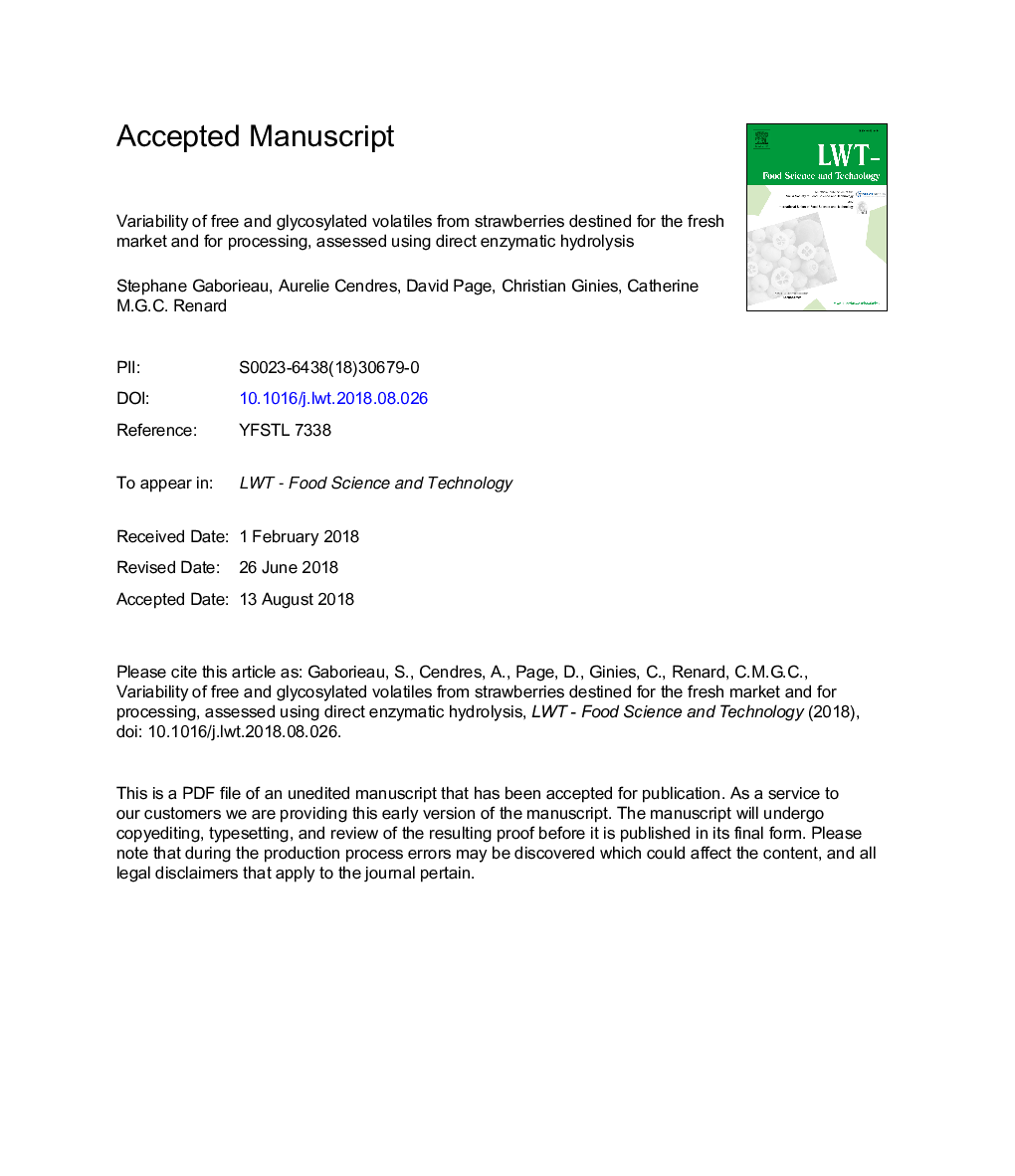| Article ID | Journal | Published Year | Pages | File Type |
|---|---|---|---|---|
| 8946258 | LWT - Food Science and Technology | 2018 | 33 Pages |
Abstract
Free- and glycosylated-volatile profiles of 14 strawberry varieties, 9 for industrial processing ('Darselect', 'Clery', 'Honey', 'Honeoye', 'Siabel', 'FCMO060', 'Fraise19', 2 'Senga Sangana') and 5 for fresh market ('Gariguette', 'Charlotte', 'CIR121', 2 'Clery' (full-field and hydroponic)), were compared. All volatiles were analysed by GC-MS. Volatiles from glycosides were first released by direct enzymatic hydrolysis. The extraction method was optimised for furaneol, a key component of strawberry aroma. More than 60 volatile compounds were identified, the most abundant being butyl acetate (average: 17â¯mg/kg), furaneol (average: 2â¯mg/kg) and free hexanoic acid (average: 3â¯mg/kg). Free-volatile profiles showed a split between fresh market strawberries, distinguished by esters and carbonyl molecules like isobutyl acetate or hexanal, and strawberries for processing, distinguished by molecule like 3-penten-2-one and 1-butanol. The three 'Clery' profiles were different notably in their hexanal, 4-vinylguaiacol and 3-penten-2-one concentrations. The glycosylated volatile profiles were similar among most strawberry varieties with, as major glycosylated volatiles, hexanoic acid (average: 1.7â¯mg/kg), benzyl alcohol (average: 0.5â¯mg/kg), gamma-decalactone (average: 0.5â¯mg/kg) and coumaran (average: 2.5â¯mg/kg). The potential for volatile enhancement by deconjugation was different. Potentially fresh market strawberries had a volatile increase of 6% against 50% for strawberries for processing.
Related Topics
Life Sciences
Agricultural and Biological Sciences
Food Science
Authors
Stéphane Gaborieau, Aurélie Cendrès, David Page, Christian Ginies, Catherine M.G.C. Renard,
